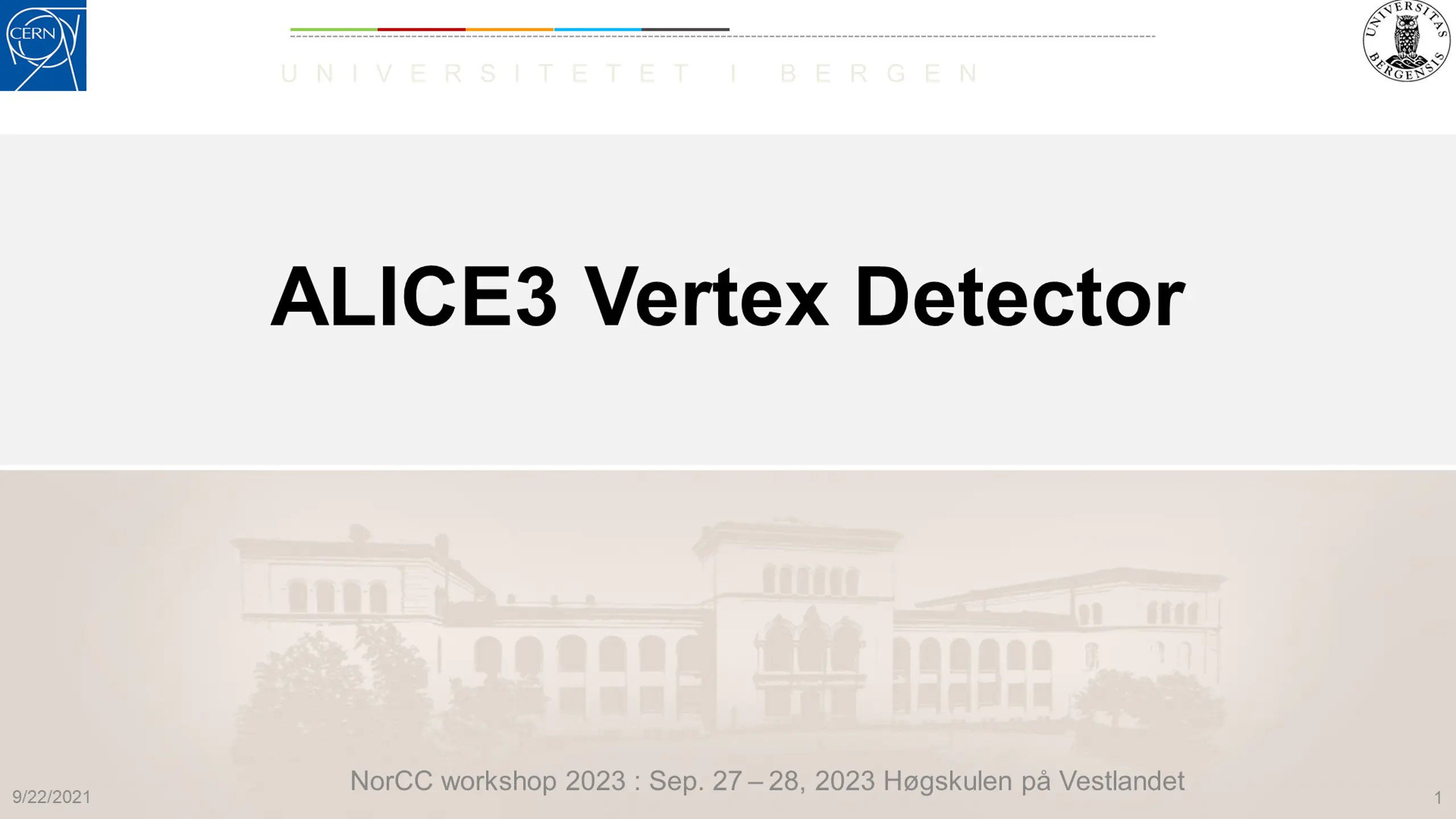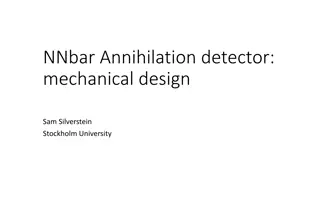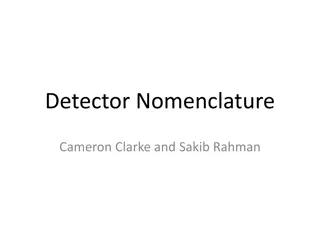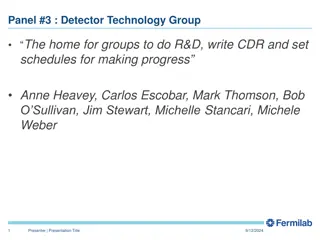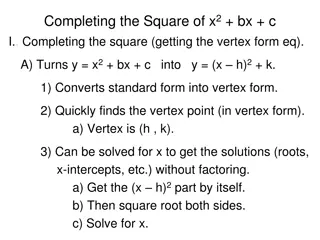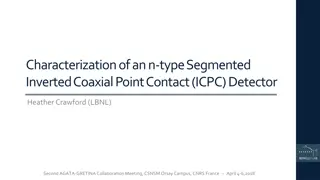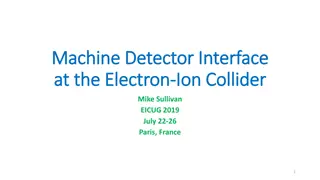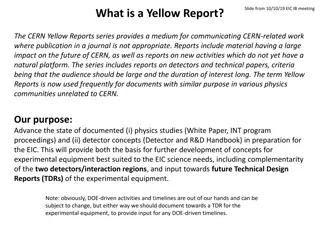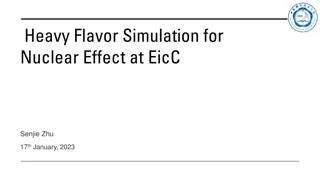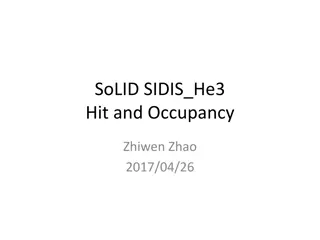ALICE3 Vertex Detector
ALICE3 Vertex Detector NorCC workshop in 2023 to learn about the key objectives and role of the ALICE Experiment's Inner Tracking System (ITS) in particle tracking and identification.
Download Presentation

Please find below an Image/Link to download the presentation.
The content on the website is provided AS IS for your information and personal use only. It may not be sold, licensed, or shared on other websites without obtaining consent from the author.If you encounter any issues during the download, it is possible that the publisher has removed the file from their server.
You are allowed to download the files provided on this website for personal or commercial use, subject to the condition that they are used lawfully. All files are the property of their respective owners.
The content on the website is provided AS IS for your information and personal use only. It may not be sold, licensed, or shared on other websites without obtaining consent from the author.
E N D
Presentation Transcript
U N I V E R S I T E T E T I B E R G E N ALICE3 Vertex Detector NorCC workshop 2023 : Sep. 27 28, 2023 H gskulen p Vestlandet 9/22/2021 1
The ALICE Experiment Inner Tracking System (ITS) Key objectives and role of ITS in the ALICE Experiment o Determination of the primary vertex o Reconstruction of secondary vertices o Tracking and identification of particles with low- momentum o Momentum and angle resolution for particles reconstructed by the Time Projection Chamber (TPC) 2
ALICE Inner Tracking System (timeline) LS2 LS3 2009 2018:ITS1 2021- ...:ITS2 2027- ...:ITS3 6 layers 2 hybrid silicon pixel 2 silicon drift 2 silicon strip radial distance (inner): 39 mm pitch: 50 x 425 m Rate handling : 1 kHz 7 MAPS* layers 10 m2, 24k chips, 12.5 Giga-Pixels Inner-most layer: radial distance (inner): 23 mm pitch: 29 x 27 m Rate handling: 100 kHz (Pb-Pb) Wafer-scale stitched MAPS Bent silicon (Half cylinder) Replacing ITS2 inner most layers radial distance (inner): 18 mm Monolithic Active Pixel Sensors (*MAPS) 3
ALICE 3 : Completely new ALICE detector A new ALICE detector in LHC LS4 (2033-34) Central part : MAPS ~ 70m2 Relying in ITS3 Inner tracker (IT) Vertex detector Middle layers Outer tracker (OT) Forward Conversion Tracker (FCT) https://cds.cern.ch/record/2803563 4
ALICE 3 tracker - vertex detector Tracking layers Beam pipe & vacuum vessel Schematic R - z view of the vertex detector the blue lines represent the tracking layers the beampipe and vacuum vessel of the vertex detector are shown in grey. Ref: ALICE3 LOI ALICE3 vertex detector specifications Ref: ALICE3 LOI https://cds.cern.ch/record/2803563 5
ALICE 3 tracker - vertex detector (Specifications) Position of first detection layers Features Limit: Required aperture for the LHC beam 5mm Retractable iris type mechanics inside beampipe Material budget 0.1% of a radiation length Distance from IP : 5mm 16 mm (Open) Intrinsic spatial resolution Curved sensors 2.5 m @ charge sharing ; pixel pitch = ~ 10 m No water cooling Hit time resolution Required time binning of 500ns needs resolution ~100 ns Without mechanical support Rate capability (continuous readout) No more PCBs for data or power lines Capacity to acquire average hit rate of 35MHzcm 2 Data throughput ~1 Tbits/sec depending upon bits/hit (2bytes) and fake hit rate ( ~10-8) Challenging levels of performance require to push limits of cutting- edge technology and R&D Power consumption Below 70mWcm 2 Radiation hardness Non-Ionizing Energy Loss = 1x1016(1 MeV neq/ cm2) Total Ionizing Dose (Mrad) = 300 6
U N I V E R S I T E T E T I B E R G E N R&D: Mechanics and Cooling NorCC workshop 2023 : Sep. 27 28, 2023 H gskulen p Vestlandet 9/22/2021 7
ALICE 3 vertex detector - R&D highlights : Mechanics Iris mechanics and requirements It is built on the idea of an assembly of 4 petals, which can simultaneously retract acting like in an iris optics diaphragm Crucial parameters & characterizing Iris Aperture: Certain minimum diameters is required for beam clearance Vacuum: Stability of vacuum may get affected due to beam energetic particles hitting the surface release all or part of their energies Impedance: Conductivity imperfections (smoothness) of beam pipe produces electromagnetic fields along beam which acts back on beam particles EMF shielding: Inner walls of petals need to control EMF produced by beam particles to minimize electrical coupling between detector material and beam Transparency: Detection of particles produced in collisions requires a clean pass from the vacuum, with minimum interaction with beam pipe 8
ALICE 3 vertex detector - R&D highlights : Cooling Power dissipation and cooling An on-detector active cooling is required to cool the sensors (70mWcm 2) and the heat generated in the RF foil by the LHC beam (90mWcm 2). Concept: CO2 cooling Heat dissipation through petals via microchannels on the outside Feasibility and design studies in progress Heat load simulations and optimizations 9
ALICE 3 vertex detector - layout 10 ALICE Upgrade week Corrado Gargiulo, Pascal J. Secouet, Soledad M. Gonzalez, Elisa Laudi
U N I V E R S I T E T E T I B E R G E N R&D: Sensor (MAPS layers) NorCC workshop 2023 : Sep. 27 28, 2023 H gskulen p Vestlandet 9/22/2021 11
ALICE 3 vertex detector - R&D highlights : Sensor layers Stitching of CMOS image sensors Production & dicing reticles of maximum dimensions High precision controlled overlapped alignment Repeated insertion till required dimensions Reticles stitched by Lithographic exposure Photograph of a stitched sensor chip for X-Ray applications of size 139.2mm x120mm produced by stitching : Tower Semiconductor Reticle Dicing Aligned placement and overlapped infusion 12 Development of a Stitched Monolithic Pixel Sensor prototype (MOSS chip) towards the ITS3 upgrade of the ALICE Inner Tracking System : TWEPP 22, Bergen, Norway. September 21th 2022
ALICE 3 vertex detector - R&D highlights : Sensor layers Key challenges / R&D focus: stitched sensor Production Yield Limitations and process variations may cause manufacturing defects affecting net yield Optimized dimensions, process parameters and DFM (Design for Manufacturability techniques) Power distribution Power distribution over long distance from a short edge Multiple power domains, planes and level shifters. Turning ON/OFF (isolating) short regions. Data transport and transmission ~25 cm How hit data is transported from pixels and shipped out on short edge Giga bit range transmitters for hit data, but lower data rates for configurations / slow control. 13 Ref: CERN-LHCC-2019-018 / LHCC-I-034
ALICE 3 vertex detector - R&D highlights : Sensor layers Bending of wafer scaled MAPS Bending and breaking! Wire bonding/Interconnection Operational characterization of ultra-thin sensors over range of thickness and sizes Reliable high precision mechanics / tools Interconnections: manual / automated Test equipment and procedures Bending mechanics for the APLIDE chip Magnus Mager (CERN) | ALICE ITS3 | CERN detector seminar | 24.09.2021 | 14
ALICE 3 vertex detector - R&D highlights : Sensor layers Curved ALPIDE and characterization Interconnections studies Wire bonding before and after bending Single Point Tap Automated Bonding SPTAB bonding A full mock-up of the final ITS3 ( ITS3 ) 6 ALPIDE chips, bent to the target radii of ITS3 Characterization under several beam tests has been performed Bending and testing of ER1 chip Development of test setups R&D work in progress 2021 2022 2023 2024 2025 2026 2027 2028 2029 2030 2031 2032 MLR1 ER1 ER2 ER3 Production Commissioning RUN4 15 Magnus Mager (CERN) | ALICE ITS3 | CERN detector seminar | 24.09.2021 |
Summary ALICE3 Vertex detector is among the most advanced novel MAPS detector being designed ALICE Norwegian research group has participated in multidisciplinary R&D for ALPIDE: physics, radiation mitigation and characterization, DAQ system design and optimizations Iris mechanics, cooling and services integration is complex, highly challenging; extensive R&D is in progress. MAPS sensor layers; There is on going participations in ITS3 conceptual studies & planned participating in performance simulations and verification. NorCC workshop 2023 : Sep. 27 28, 2023 H gskulen p Vestlandet 16
ALICE 3 tracker - vertex detector Back up 17
ALICE 3 vertex detector - R&D highlights : Iris modularity 4 x Iris petal modules Sensor layers Secondary vacuum To avoid contamination into primary beam vacuum Services on one side Vacuum Rotation mechanics Power and Data 18
ALICE 3 tracker - vertex detector Vertex detector Key performance features ITS3 ITS2 Pixel size ( m2) (10 x 10) (20 x 20) (30 x 30) Position resolution ( m) 2.5 5 5 Time resolution(ns RMS) 100 100* / O (1000) O(1000) Shaping time (ns RMS) 200 200* / O (5000) O (5000) Fake-hit rate (/ pixel / event) < 10-8 < 10-8 < 10-7 Power consumption (mW / cm2) 70 20 (pixel matrix) 40 / **30 Particle hit density (MHz / cm2) 94 8.5 5 Non-Ionising Energy Loss (1 MeV neq/ cm2) 1 x 1016 3 x 1012 3 x 1012 Total Ionising Dose (Mrad) ~300 0.3 0.3 19
